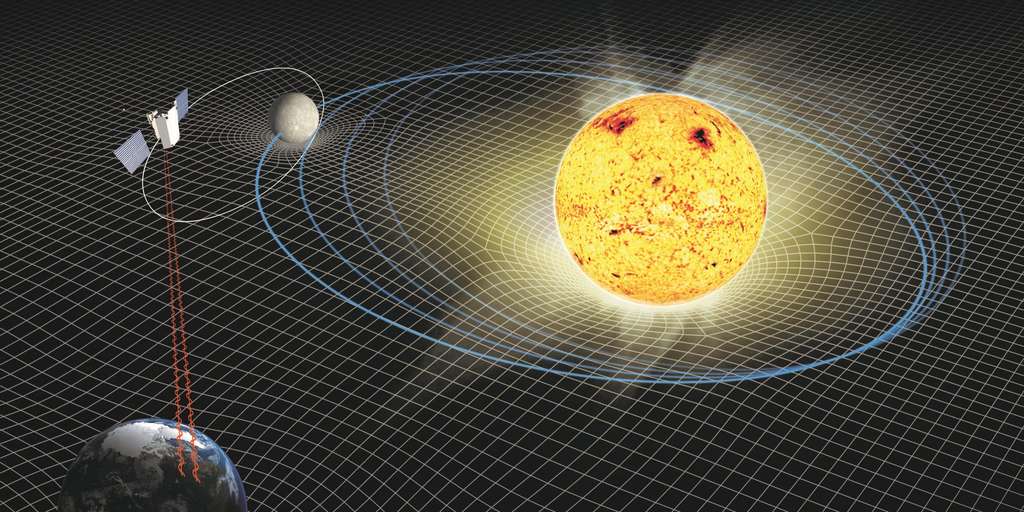Why mercury is moving away from the Sun?
The planets move away slowly from the Sun because it loses mass. That's what says the theory. The effect comes to be measured accurately by observing the movements of the around mercury Messenger probe. Since the appearance of the human species, we are more away from a few kilometres...
For decades, astrophysicists are trying to go beyond the theory of the General Relativity of Einstein. Maintaining a space-time curve, they modify the equations governing its variations in space and in time. This may lead to violations of the principle of equivalence, such as tracking the Mission Microscope Cnes or variations of the constant of Newton.
To test these hypotheses, the celestial mechanics is a good resort. She has played that role for the theory of the Gravitation Einstein, which explained the famous precession of the perihelion of Mercury, who escaped to the theory of Newton.
In fact, this test is actually quite subtle and difficult to implement. Perihelion is the point of the orbit a planet that is the closest of the Sun and naïve calculations lead to that this point remains fixed in space. However, the field of gravity the Sun is not the only force changing the trajectory of mercury, there are also those produced by the other planets of the Solar system. We already knew time of Einstein that gravitational disturbances were a part of the movement of precession of the perihelion of the planet.

However, other effects were taken into account, namely the fact that the Sun is not a perfect sphere, and that it is not homogeneous. The abnormal behavior of mercury could then be explained assuming the shape and distribution of the masses in the Sun were different from what we thought. It seemed unlikely, however, even if this track was still considered more closely during part of the XXe century.
The Earth away 15 km million years
Today, in an article in the magazine Nature Communications, a team of researchers of the NASA and MIT is back on the case using probe Messenger When she was in orbit around mercury. Changes in trajectory allowed to measure even more precisely that of the planet. Them movements probe into communication radio with the Earth could indeed be determined more precisely. Gaps between those measured and calculated movements could be talkative on several issues in the research of a new Physics or, more soberly, to put less stress on a solar physics exotic Although fascinating.
It is from this work that Einstein's theory passes again victoriously some tests and it is possible, for the first time, to measure the influence of a loss of mass the Sun by separating other effects. This weight loss comes of course from the solar wind but also the reactions of Fusion thermonuclear which transform a part of its mass in a radiation which leaves the Sun (Incidentally, this last effect can be described in general relativity by the metric of) Vaidya). In response, mercury should slowly but surely away from our Star and it must be the case of all the other planets of the solar system.
A precise figure could be determined: the Sun loses one-thousandth of its mass by 10 billion years, which translates to an orbit of the size of the Earth, by an increase of approximately 1.5 cm per year, is 15 km per million years. The constraints on the variation in time of the the gravitation constanthave also been improved by a factor of 10 compared with that determined by the bars of the movement of the Moon.
WHAT TO REMEMBER
The movement of mercury was one of the first historical tests of the theory of general relativity, and it could become a test for a theory going further.
Using the Messenger probe movements indirectly linked to those of mercury can test Einstein's theory and also to estimate the loss of mass of the Sun, due to the solar wind and the conversion of matter into radiation.
The measures give a mass loss of one thousandth by 10 billion years and the planets are moving away so. For the Earth, its orbit would grow 15 km per million years or so.









Post a Comment